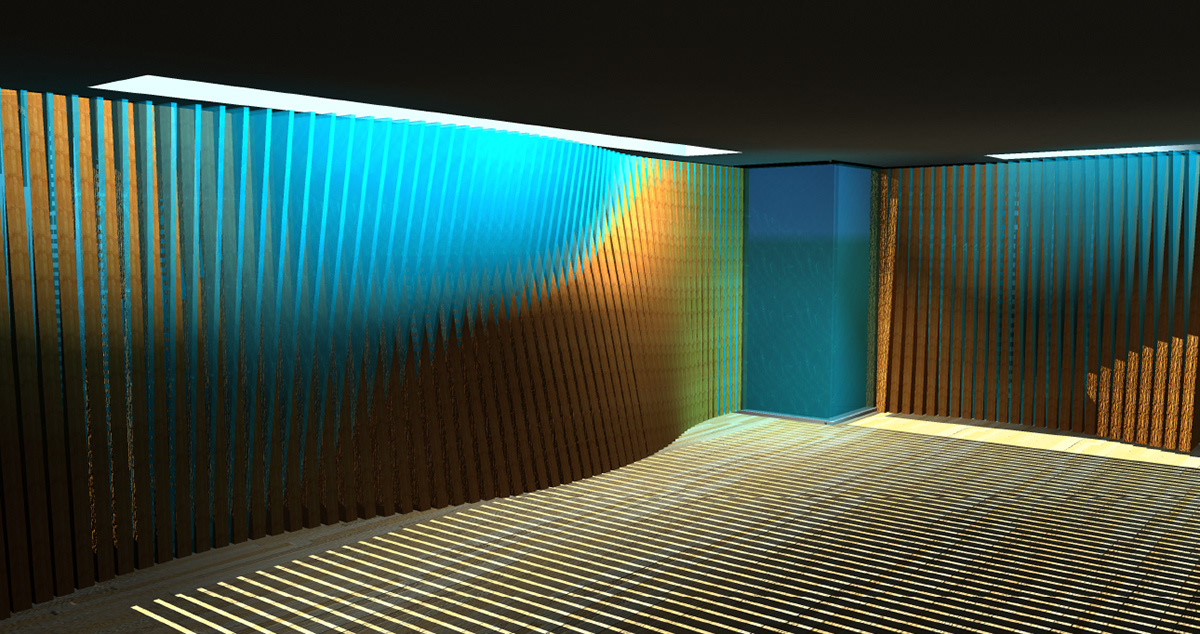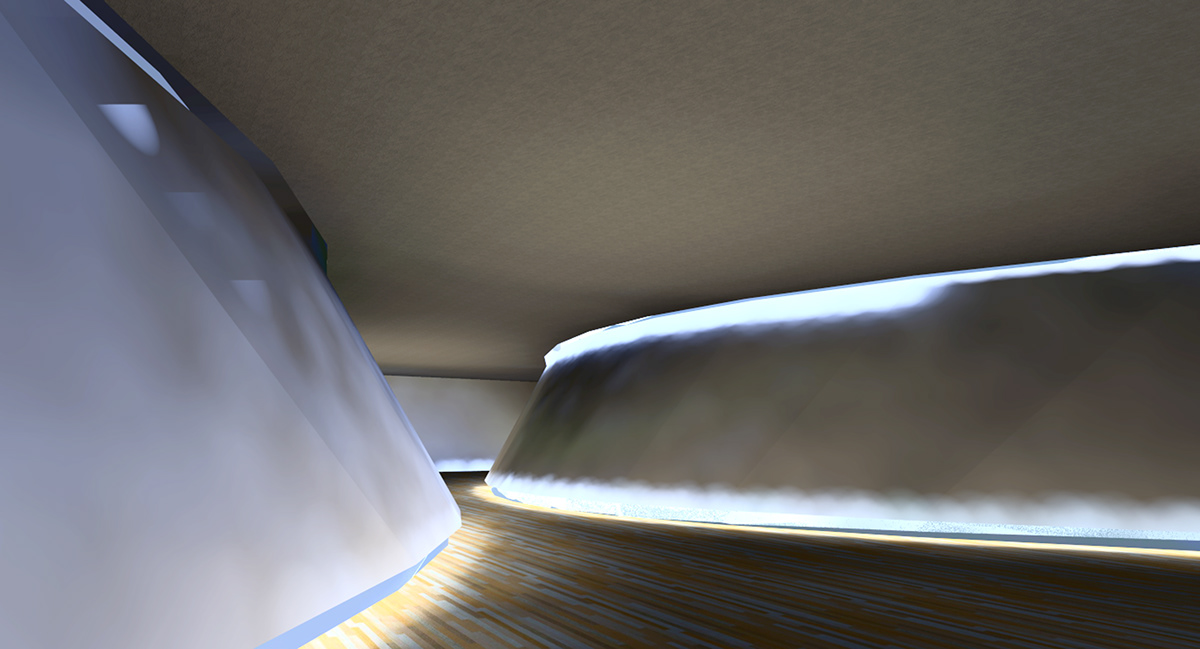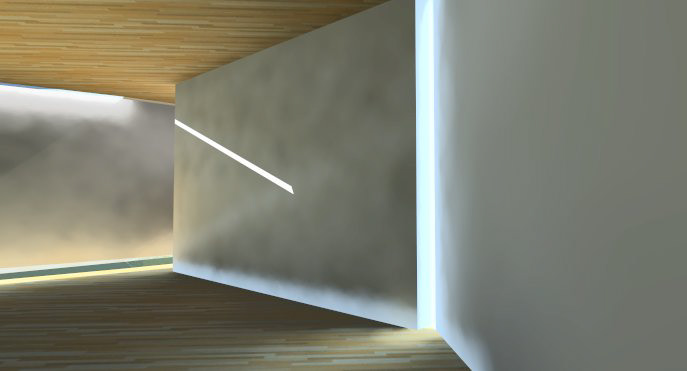on rendering
by Chris Schellhammer
by Chris Schellhammer
I am in my fourth year of using photo-realistic and non-photo-realistic rendering techniques. I am interested in the application and the cross application of computer generated and artistically applied rendering techniques to produce the right image for the task at hand.
The two images below were commissioned to help raise money for a renovation project on the campus of Virginia Tech University.
The two images below were commissioned to help raise money for a renovation project on the campus of Virginia Tech University.


Artistic rendering such as sketches or watercolor can help communicate ideas on a conceptual level by allowing the viewer's imagination to take part in the process. This allows decisions regarding the make and model of fixtures, furniture and finishes to wait until the appropriate phase of the project.
When realistic renderings are used in planning phases to communicate the "big picture" of a project, they are often counterproductive because they include details that are misunderstood as final decisions.
Consequently, attention is misdirected to these details rather than the "big picture." Several examples of non-realistic renderings are included in this compilation.
When realistic renderings are used in planning phases to communicate the "big picture" of a project, they are often counterproductive because they include details that are misunderstood as final decisions.
Consequently, attention is misdirected to these details rather than the "big picture." Several examples of non-realistic renderings are included in this compilation.

Another challenge with photo-realistic renderings is that the more realistic the image becomes, the more computing time is required to produce it. For example, lighting specifications can be modified to mimic the variable nature of light. Light is refracted, reflected and absorbed based on the material types it encounters in the model, and generated based on the spectrum of artificial lighting sources. The more complex these specifications, the longer it takes to produce presentation quality images at suitable resolutions.
For example, note the mirror like quality that takes place in the below image.
For example, note the mirror like quality that takes place in the below image.

To mitigate some of these challenges, I use proofing modes (low lighting/material specificity and resolution) to fine tune images. After specifying site and solar aspect for the model, I labor over image composition, spatial conditions, camera aspect, scale and export/output parameters before working on detail. Because proofs are faster to generate and easier to share, images can be reviewed with others for comment and appropriately lack the detail that might otherwise be needlessly scrutinized. At this stage, these images are similar to photographic proofs. Many are produced, but only a few are selected for final production.
For these selected views, I then start to develop the virtual environment to further specify lighting and material as well as higher resolution. By working this way, computing time is more efficient and modifications to images appropriately and efficiently applied.
For these selected views, I then start to develop the virtual environment to further specify lighting and material as well as higher resolution. By working this way, computing time is more efficient and modifications to images appropriately and efficiently applied.

When appropriate, variable rendering techniques can be utilized. In the image above, non-realistic and realistic images are merged into a composite.
And in the example below, the computer is only used to model the sight-lines of a course computer model that are then free-handed onto hard media. In this case, charcoal was applied to a 4 ft. x 6 ft. sheet of drywall.
And in the example below, the computer is only used to model the sight-lines of a course computer model that are then free-handed onto hard media. In this case, charcoal was applied to a 4 ft. x 6 ft. sheet of drywall.

In contrast to the "perfect day" portrayed in many computer renderings, I am also interested in renderings that convey the reality of the world, such as variable weather conditions, atmospheric opacity and time of day. In this way, renderings can be instructive, in addition to their use in promotion and presentation.
For example, following the "cloudless sky" portrayed below, a trio of nighttime images suggests what it might be like to arrive at one's apartment in the dark.
For example, following the "cloudless sky" portrayed below, a trio of nighttime images suggests what it might be like to arrive at one's apartment in the dark.




Thank you for your time and interest - Chris
A few more interiors follow.
A few more interiors follow.







